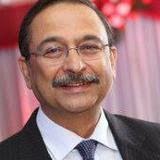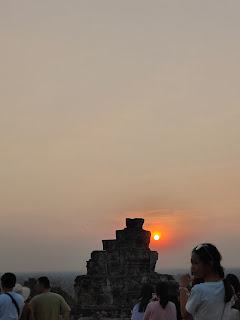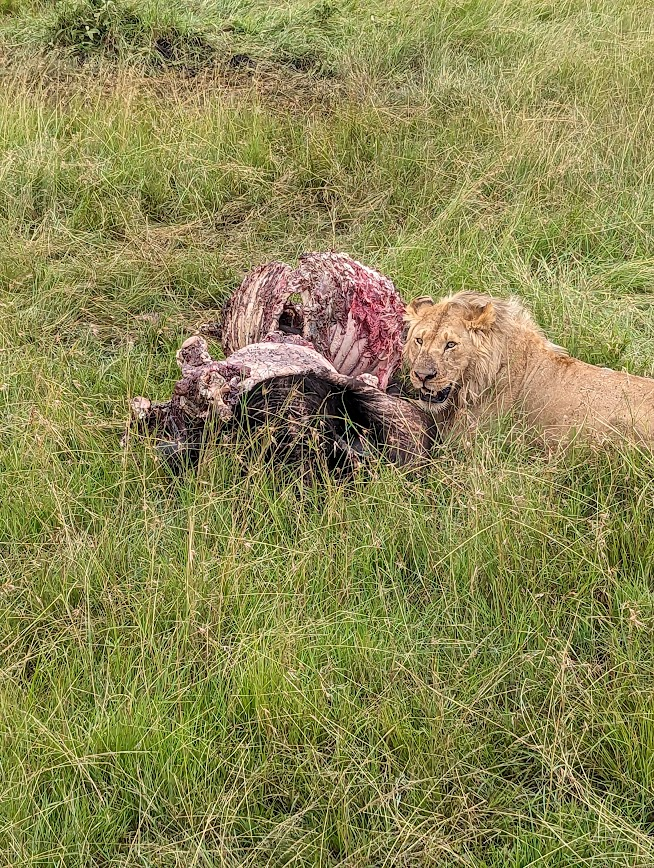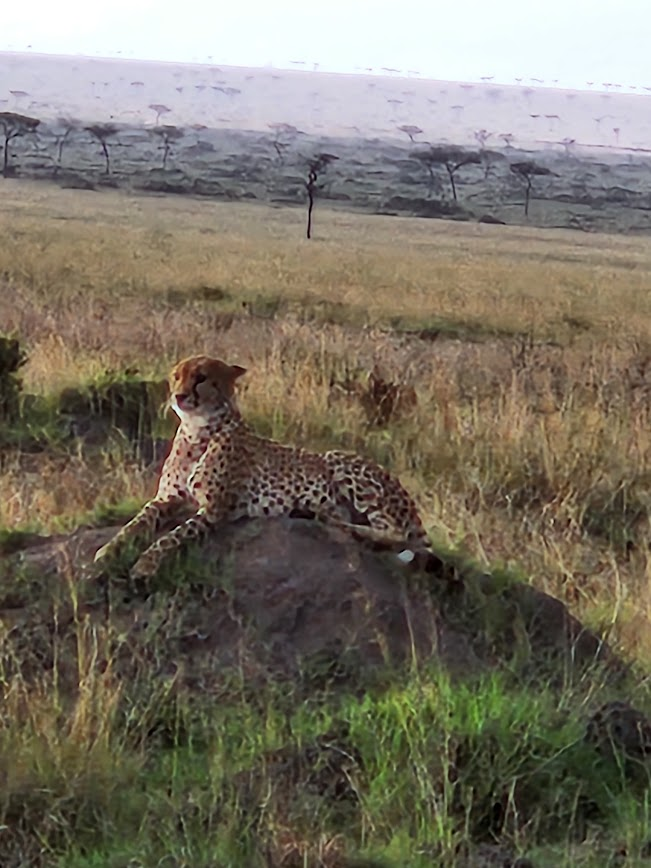Wednesday, February 21, 2024
Cambodia - A Glorious Indic Heritage
Saturday, January 27, 2024
Keezhadi - Musings on the origins of Indian Civilisations and Writing Systems
I have a fascination for ancient Indian history and in particular for languages and scripts that have eluded decipherment over the centuries. It's a strictly amateurish interest though. I have no new research to offer. Only a combination of recorded history and speculation. My earlier article on the Saraswati river elicited a lot of interest so here's the next one almost 10 years later!
When I started writing this article, I wasn't sure where it was going. It seems to have meandered along between the origins of homo sapiens to the Iron Age and arrived at my favourite hobby horse - ancient scripts!
Enjoy the read.
The small town of Keezhadi (also written as Keeladi) is situated on the bank of the Vaigai river near Madurai in Southern Tamil Nadu. The ASI (Archeological Survey of India) commenced excavations in 2013, barely 10 years ago. Subsequently, the Tamil Nadu Archaeology Department has taken over with excavations continuing to date. The findings have been interesting and controversial too!
To explore further, we need to rewind into prehistory - to the time when homo sapiens developed in Africa and started migrating outwards.
Though the migration of primitive humans out of Africa started very early, it is generally accepted that the 'recent dispersal' of humans out of Africa around 50,000 - 70,000 years ago led to stable human populations around the world. There seem to have been two streams of population that moved into India. One that entered through North West India and moved across the Indo Gangetic plain towards South East Asia and the second a stream that entered India along the western coast and moved southwards and then back up the east coast. The two streams merged in eastern Indian and moved together thereafter.
Paleolithic (early stone age hunter gatherers dating from 500,000 - 10,000 BCE) sites have been found in various parts of India including Tamil Nadu (Attirampakkam) pointing to widespread development of stone tools and weapons. Some of these societies progressed into a Neolithic culture with the development of agriculture, pottery and finer stone tools. Neolithic cultures have been observed in several sites in Tamil Nadu as well. The dates here range from 2800 - 1500 BCE
The next significant human development has been the ability to use metal, starting with copper and bronze. India entered the Bronze Age with the Harappan Culture in around 3000 BCE. Interestingly, there does not appear to be any evidence of Neolithic cultures transiting to the Bronze Age anywhere else in India. Rather, in places like Tamil Nadu, Iron Age cultures have appeared without evidence of an intervening Bronze Age at all. One such example is Keezhadi.
However, before we come to that, one significant point that does strike me is that the Paleolithic and subsequent Neolithic cultures that came up in India in various places came up independently. There does not appear to be a link between them and there is no one 'mother culture' or primal site that came up first and the others followed. Secondly, Paleolithic cultures came up in all parts of India implying that both streams of migration out of Africa (Coastal and Indo Gangetic) were productive insofar as future development of mankind is concerned. These inferences are very important for the subsequent analysis in this article.
The traditional Aryan Invasion Theory (AIT) postulates that the invading Aryans defeated the inhabitants of the Harappan civilisation who were the original Dravidians and forced them to disperse southwards. This happened suddenly in around 1200 BCE. Thus, the Bronze Age Harappans dispersed carrying with them the knowledge of smelting of Bronze that they had been using over the years. One would have expected them to use that knowledge in their new homelands and set up Bronze Age settlements elsewhere but surprisingly that did not happen. The Harappan script also did not make an appearance in any of the places where the people had allegedly moved to. The purpose of the foregoing is not to suggest a solution to the mystery of the Harappan civilisation but rather to postulate that there does not appear to have been a significant (sudden or on a big scale in a short period) level of contact between the Harappan civilisation and other burgeoning civilisations in India. The alternate view that there was no dramatic AIT and that due to a change in weather patterns and the drying of the rivers like the Saraswati, the inhabitants of the Harappan Civilisation gradually dispersed into the subcontinent, primarily into the fertile Indo Gangetic plain and their language and technology largely withered away.
Coming back to Keezhadi
There is an excellent museum near the archaeological site that explains the findings in a simple fashion. It is clear that Keezhadi was an Iron Age settlement from the third Sangam period in Tamil Nadu. The dates have been well established by radiocarbon dating as 580 BCE to 300 CE. There are many iron artifacts such as sickles, nails and rods and remnants of furnaces and ore that clearly establish that it was indeed an Iron Age site. Interestingly, gold bars and jewelry have also been found so it is clear that the inhabitants had an understanding of other metals as well. Perhaps, the use of Bronze may have been for a short period or not at all. I was unable to find any references to the use of Bronze at Keezhadi though. There is also ample evidence of seafaring trade with the middle East and even Europe as there are many Roman coins that have been unearthed.
The question is whether Keezhadi developed independently as an Iron Age site or was there movement of Harappan Civilisation people southwards consequent to the Aryan Invasion that led to its establishment?
Frankly, the idea that the Harappans populated Keezhadi strains credibility. Amongst ample evidence of Paleolithic and Neolithic sites in the vicinity and the direct development of iron working that the Harappan Civilization never had it appears highly unlikely that the Harappans trekked thousands of km southwards and developed iron working skills along the way to set up Keezhadi. It is far more likely that this is an independent development.
The most interesting thing from my perspective was the use of the Tamil Brahmi script at Keezhadi. The script is referred to as Tamili locally indicative perhaps of a desire to appropriate an indigenous origin to the script. Tamil Brahmi is clearly recognizable as Ashokan Brahmi with a few alterations/additions to accommodate sounds not commonly used in North India.
Fragments of potsherds with Tamil Brahmi writing have been found at Keezhadi that have been dated to 580 BCE via radiocarbon dating.
- Brahmi emerged as an adaptation of a Semitic script. Trade contacts with the Phoenicians existed for a long time in both North and South India. The script candidates from which Brahmi is said to have been derived include Aramaic and Kharosthi.
- Brahmi evolved out of the Harappan Script.
- Ashoka created Brahmi and enforced it as a script for universal use
Wednesday, January 3, 2024
Impermanence
Indians have been conditioned to seek stability and 'permanence' in everything we do. Family relationships, especially stable marriages are the bedrock of our society. Jobs and careers follow the same pattern. The sturdy middle class always sought government jobs as ones that were not run by pernicious capitalists and offered a stable, albeit somewhat stultifying future for young aspirants. The pinnacle, of course, was the IAS or one of the central services.
This entire mindset has gone through a seismic change in the recent past. Some examples would serve to illustrate the point:
- Marriages are not as stable as they used to be. It's another matter that marriages in the past may not have been stable either but there was a strong social stigma attached to divorce that prevented them from falling apart altogether. There is no such thing now. Divorce rates amongst the middle class (the labour class anyway has had a fairly relaxed approach in this context) and above have skyrocketed and a single woman divorcee does not attract the same societal opprobrium as earlier. Second and third marriages are fairly common and the 'yours, mine and ours' concept for children is becoming far more visible.
- The most striking aspect of impermanence is clearly the attitude towards jobs. Not so long ago a young man or occasionally woman, was lucky enough to land a respectable government job soon after they graduated. This would form the basis of an honourable livelihood for the rest of his professional life. It would also define his social status, friends circle and the kind of people whom his children got married to. The first transition was to a private sector job instead of a government one. This was bad enough but it was compounded by increasing opportunities in a rapidly growing economy. The temptations of new opportunities and more money has led to a roller coaster of new jobs every few years or even months.
- A man no longer treasures his first scooter or car that he acquired after a long wait and much penny pinching. Ownership is increasingly passé. Ubiquitous Ubers and Olas have made car ownership unnecessary and even burdensome in our crowded cities. Even if you do decide to own a car, leasing is becoming the preferred option rather than buying. This is aided by rapidly evolving technology that constantly tempts you to move up to the next best thing. Mobile phones are a classic example of this. If you do change every two years to the latest shiny Apple and Samsung, do you stop to think that the cost of the hardware is likely much more than the service that we constantly complain about. It may be food for thought that if we were willing to pay a little more for better service and kept the same phone for 4 years we would be probably be far happier with the outcome.
- The fact that rental yields are abysmally low may just be finally sinking in. At a 2% return on the replacement value, it makes far better sense to rent a house rather than buying one. In the previous generation, people struggled to buy their first homes with expensive bank loans and sacrificed holidays and what little luxuries they could afford for the stability that home ownership offered. The 'here and now' is much more important today and young people would rather spend on a holiday abroad than be tied up to a low yield asset.
I feel that adoption of western concepts and ways of life tends to follow a kind of a S curve in India. Adoption starts slowly and then accelerates upto a point but then it flattens out. I may be sticking my neck out here but I would hazard a guess that divorce rates, for example, will not reach western levels in India even in heavily urbanised and westernised parts of India. Adoption of western food items like breakfast cereals have also followed this kind of pattern. Eventually idlis and parathas will prevail over breakfast cereal. There are many MNCs who have learnt the hard way that India will not mirror western market constructs and that one has to learn the Indian way if you are to succeed in this market.
One may argue that the leap from breakfast cereals to a metaphysical concept like impermanence is a tenuous one. Suffice it to say that most Indians are grounded in a reality that has been a long time in the making and one that is not easily shaken. There is something about a 5000 year old, unbroken civilisation in each one of us. World thought leaders? Mais non! But self confident in one's own skin, certainement!
Tuesday, August 1, 2023
East African Safari
Our daughter Priya and her family had planned a family holiday in Kenya and Zanzibar last month. Her in laws, Dilip and Shrimi Sinha joined us, so eventually we were a party of 6 adults and 2 children.
We flew Qatar airways to Nairobi via Qatar. The Delhi Doha sector was a code share flight operated by Indigo along with their trademark junglee sandwiches. The flights were quite unpleasant - in the middle of the night and too short to get much sleep. Fortunately, now Air India has started a direct Delhi Nairobi flight that will make things much better. Doha airport is quite stunning - beautifully laid out with great shopping and dining options.
Day 1
We landed at Nairobi airport in the morning on time. The airport is apparently temporary and it shows! It's quite shabby and looks like a real dump. I hope they get the new airport up and running soon. We were met by very courteous drivers who drove us to the Eka hotel where we were staying. We had breakfast and as some of the rooms were ready we freshened up as well.
Then we were off - to the Giraffe Center where they have a high platform for feeding the Giraffes. They give you some pellets in a coconut shell - all very natural and eco friendly. The whole experience was and very exciting for all of us. Later we heard a talk about Giraffes and learnt how to differentiate between the various species.
We then went to a workshop where women were making beads made of volcanic material. They put up a nice 'hakuna matata' dance for us.
After that we went to a museum that had a snake park attached. The children made a bee line to see the black mambas and pythons that they draped around their necks.
The guide at the museum was outstanding. We were fascinated by glimpses of the first man on earth and how all humans developed in Africa and then moved out. We overshot the time that the museum was to close but the lady was very kind and we reluctantly left to return to the hotel.
Nairobi is a beautiful city. There is a very large slum but the more affluent areas are terrific with colonial bungalows, greenery and wide roads. Being at an elevation of around 5000 ft the weather feels like Bangalore. Cool all the year round. We had dinner at the hotel and went to sleep early exhausted after the sleepless night on the flights.
Day 2
At 8:30 next morning we were picked up for the drive to Lake Elementeita.
This is one one of the five lakes around the rift valley in Kenya - the lakes are all salt water and a haven for flamingos. The drive was very beautiful along the ridge - the scenery is reminiscent of South Indian hill stations like Ooty and Kodaikanal and the misty, cool weather adds to the feeling. The continent of Africa is being cleft into two at the rift valley that runs from north to south. Maybe in a few millennia, some new land masses may make their appearance.
The Serena Hotel at Lake Elementeita was great. Well laid out and protected by an electric fence to keep the large animals out.
The view of the lake was spectacular - full of pink flamingos covering most of the water area. They feed on algae and apparently the pink colour is dependent on the quality of their food.
There was a viewing point for the lake that had antelopes just outside. An idyllic spot! Food was great at the hotel. The only problem was that the orders were taken individually, plated and served so it did take a while. Started our journey of exploring local beers with 'Tusker' a light crisp lager with a faintly bitter aftertaste but perfectly acceptable. Next day we went for our first safari to the Lake Nakuru national park, where we saw the white rhino.
We were lucky to see a whole bunch along with numerous zebras, baboons, antelopes and birds.
The park is right next to a city and we were pleasantly surprised to see such plentiful wildlife so close to an urban area.
Back to the hotel and time for some more beer exploration. This time we tried Balozi that did not turn out quite so nice. An early night so we could leave for the Masai Mara next morning.
Day 3
The drive to the Masai Mara was quite beautiful as it followed the rift valley for some of the time. We then turned off into an unpaved road and while the Land Cruisers made good time it was a bumpy ride and we were quite worn out by the time we reached our camp. We crossed the famous Mara river on the way.
The camp was named Kichwa Tembo near what is called the Mara Triangle. This is a spectacular property. The rooms were to top of stilts around 10 - 12 feet high. These were tents that could be unzipped to let in light and air. We were advised to keep the netting closed at all times as the monkeys were quite aggressive.
The main areas of the resort opened out towards the open grassland of the Mara and we could often see elephants and antelope vending their way across. There was an electric fence in a deep ditch to keep the larger animals out.
But the resort had it's resident wart hogs (pumbas) that wandered around at will. The food at the resort was excellent with alcohol also included in the price. There was a great chef in charge at the live counter. He was a real artist and kept up an interesting conversation while he prepared eggs for breakfast or grills for lunch and dinner. Amazing variety and quality of fresh produce in the middle of nowhere!
Day 4 and 5
These were spent in game drives around the Mara triangle. We went up to the Tanzania border with the endless Serengeti plain stretching far towards the South.
We crossed and re-crossed the Mara river but the actual river crossing of the wildebeest herds was still to come.
The river is rather narrow and we saw a herd of hippos wallowing on one side with a huge crocodile sunning himself on our side.
Lions in plenty. A full pride as well as a fellowship of males gorging on a buffalo that they had killed. The next day the lions were gone but the hyenas and vultures were picking the bones clean.
We saw many cheetahs including three that failed to hunt down a zebra who stood his ground and shooed them off. An ostrich exploring something on the ground.
Then a leopard loping around in the distance oblivious of the prey all around. Herds of Zebras and Antelopes were everywhere. Buffalos demonstrating the democratic manner in which they move - almost like an election to decide which direction they will take next. Elephants in plenty and some really beautiful pictures as a result.
We saw the big five on this trip - Lions, Leopards, Elephants, Buffalo and Rhino.
The Mara is stunningly beautiful especially at dawn and sunset with the endless grass stretching for miles and the sky awash with colour. There are few trees but the predators still manage to slink up to the their prey. The predators hunt to feed themselves, not for enjoyment. Africa is like a drug. Once you've tasted it you WILL come back. This time with a better camera!
India woke up to the depredations of hunters and the spread of population a little late but I think we have a well developed sense of ecological preservation now. Africa has far more animals. Long may their wilderness last.
Day 6
A reluctant good bye to the Masai Mara and drive back to Nairobi. We reached at lunch and checked in to the Tamarind Tree Hotel. This is conveniently located close to the Wilson airport from where we were to take a flight next day to Zanzibar, The evening was spent at a mall looking for Kenya souvenirs and a good dinner - mix of Indian and Chinese food.
Day 7
After a little confusing security and immigration procedures at the small Wilson airport in Nairobi we boarded a turbo prop plane for Zanzibar.
Zanzibar is one of those places you read about in stories from the Arabian nights. And here we are! After a scenic flight from Nairobi flying close to the cloud covered summit of Mt Kilimanjaro we landed at a modern airport. Our resort was on the other side of the island so we drove for an hour and a half to get there. Incredible white sand beach stretching for miles.
Beautiful resort, the Breezes Beach club on the Indian Ocean side. Went for a morning walk when the tide was out and the sky was awash with colours. Total relaxation after a few strenuous days of safari.
Day 8
Today we drove to Mnemba beach at the northern end of Zanzibar. A boat ride on a heaving sea was kinda ok but the sight of the dolphins was exciting!
Hakuna Matata! The best philosophy of life.
Day 9
The last day in Zanzibar was very interesting. We went to Prison Island first.
It now has a tortoise sanctuary with the oldest resident being 196 years old! Munching away on lettuce and green leaves these ancient specimens have droopy eyes and thick leathery shells.
There were quite a few peacocks strutting around as well.
A short boat ride away from the town. Then Freddie Mercury's house where he was born.
Some spice shopping and then a good lunch at the Africa house restaurant overlooking the sea.
Stone Town needed more time for exploration, maybe stay there for a day.
Then a long flight(s) back to Delhi and some much needed sleep.
Very enjoyable family holiday. Many thanks to Priya Bhatnagar Sinha and Abhinav Sinha for planning the whole thing and to Dilip Sinha and Shrimi Sinha for the great company! More African safaris coming up!
Photo Credits: Abhinav Sinha, Priya Sinha, Gayatri Sinha, Nayantara Sinha, Devi Muthu Bhatnagar, Dilip Sinha and Divyaroop Bhatnagar




























































































